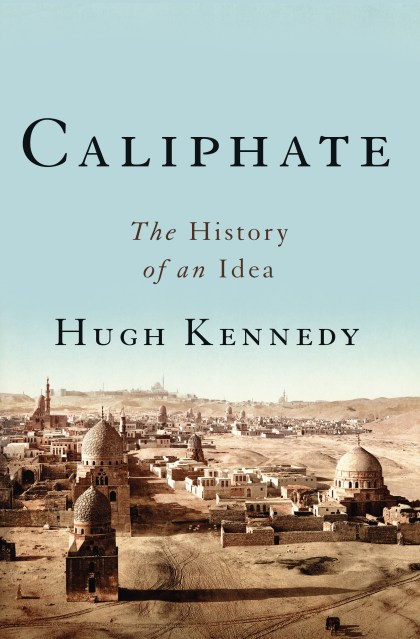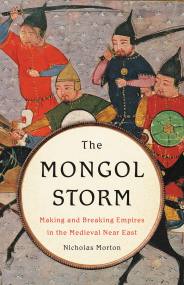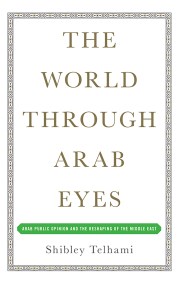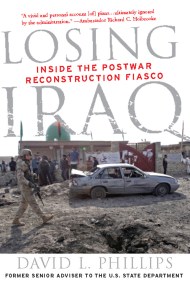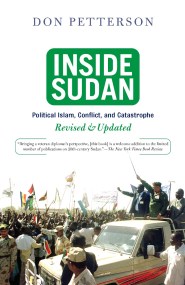Promotion
Use code MOM24 for 20% off site wide + free shipping over $45
Caliphate
The History of an Idea
Contributors
By Hugh Kennedy
Formats and Prices
Price
$18.99Format
Format:
- ebook $18.99
- Hardcover $27.99
This item is a preorder. Your payment method will be charged immediately, and the product is expected to ship on or around October 11, 2016. This date is subject to change due to shipping delays beyond our control.
Also available from:
In Caliphate, Islamic historian Hugh Kennedy dissects the idea of the caliphate and its history, and explores how it became used and abused today. Contrary to popular belief, there is no one enduring definition of a caliph; rather, the idea of the caliph has been the subject of constant debate and transformation over time. Kennedy offers a grand history of the caliphate since the beginning of Islam to its modern incarnations. Originating in the tumultuous years following the death of the Mohammad in 632, the caliphate, a politico-religious system, flourished in the great days of the Umayyads of Damascus and the Abbasids of Baghdad. From the seventh-century Orthodox caliphs to the nineteenth-century Ottomans, Kennedy explores the tolerant rule of Umar, recounts the traumatic murder of the caliph Uthman, dubbed a tyrant by many, and revels in the flourishing arts of the golden eras of Abbasid Baghdad and Moorish Andalucà Kennedy also examines the modern fate of the caliphate, unraveling the British political schemes to spur dissent against the Ottomans and the ominous efforts of Islamists, including ISIS, to reinvent the history of the caliphate for their own malevolent political ends.
In exploring and explaining the great variety of caliphs who have ruled throughout the ages, Kennedy challenges the very narrow views of the caliphate propagated by extremist groups today. An authoritative new account of the dynasties of Arab leaders throughout the Islamic Golden Age, Caliphate traces the history-and misappropriations-of one of the world’s most potent political ideas.
Genre:
-
"The doctrine of the caliphate still animates the imagination of Muslim theologians, politicians and ideologues, as Hugh Kennedy shows powerfully in Caliphate."Wall Street Journal
-
"Hugh Kennedy demonstrates in Caliphate: The History of an Idea, his readable but scholarly account, [the caliphate] was present throughout centuries of Muslim history, in a variety of guises."New York Review of Books
-
"[A] sweeping, yet deeply researched, history of popular and scholarly efforts-from the mid-seventh century to the present day....extraordinarily important..."Choice
-
"British historian Hugh Kennedy takes it upon himself to recover the caliphate's meaning, and he succeeds with welcome doses of erudition, accuracy and, when necessary, empathy."Washington Post
-
"An engaging portrait of a fascinating, multifaceted history."Times Literary Supplement
-
"[An] engrossing and entertaining introduction... Kennedy clearly shows the continuing power of this idea to incite controversy."Publishers Weekly
-
"Enlisting significant Arab-language scholarship, Kennedy provides a carefully calibrated, timely chronicle for nonacademic readers."Kirkus Reviews
-
Wickedly delightful and addictively delicious, Kaylie Smith’s PHANTASMA is the decadent feast that every romantasy lover dreams of. Dark magic, fraught danger, exhilarating trials and a simmering-hot romance abound within its pages. Even long after closing the book, readers will be haunted by the tenacity of headstrong Ophelia and her sinfully gorgeous Phantom. And there’s a cat!Sophie Kim, author of The God and the Gumiho
- On Sale
- Oct 11, 2016
- Page Count
- 336 pages
- Publisher
- Basic Books
- ISBN-13
- 9780465094394
Newsletter Signup
By clicking ‘Sign Up,’ I acknowledge that I have read and agree to Hachette Book Group’s Privacy Policy and Terms of Use
